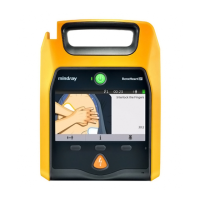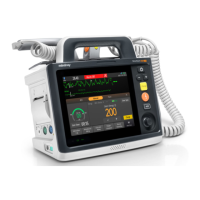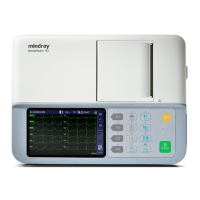17 - 1
17 Monitoring Invasive Blood Pressure (IBP)
17.1 IBP Safety Information
• Use only pressure transducers specified in this manual. Never reuse disposable pressure
transducers.
• Make sure that the applied parts never contact other conductive parts.
• To reduce the hazard of burns during high-frequency surgical procedure, ensure that the
equipment’s cables and transducers never come into contact with the high-frequency surgical units.
• When using accessories, their operating temperature should be taken into consideration. For more
information, see instructions for use of accessories.
• All invasive procedures involve risks to the patient. Use aseptic technique. Follow catheter
manufacturer's instructions.
• Mechanical shock to the invasive blood pressure transducer may cause severe shifts in zero balance
and calibration, and cause erroneous readings.
• Using IABP may cause IBP, including PR, measurements inaccurate or failed.
17.1.1 Measuring an IBP
• Make sure that all the transducers are zeroed correctly before the IBP measurement.
• Make sure that no air bubble exists in the IBP transducer system before the IBP measurement.
• If measuring intracranial pressure (ICP) with a sitting patient, level the transducer with the top of the
patient’s ear. Incorrect leveling may give incorrect values (not applicable if measuring ICP with the
Codman ICP transducer).
17.2 Measuring ICP Using the Codman ICP Transducer
• If equipment of different brands are used to zero the Codman ICP transducer, the zero reference
values can be different. Use a Mindray equipment to Zero the Codman ICP transducer if you will take
ICP measurement using a Mindray equipment. Otherwise the ICP measurement can be inaccurate.
17.3 IBP Display
• For some pressures, only the mean pressure is displayed in numeric area. Measurement units for
different pressures may be different. If the Art and ICP pressures are measured simultaneously, CPP
value is displayed in the ICP numeric area, which is obtained by subtracting ICP from the Art mean.

